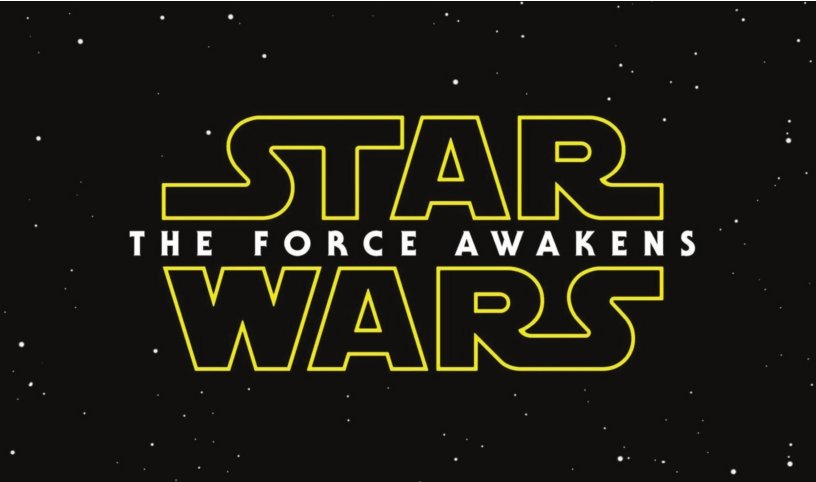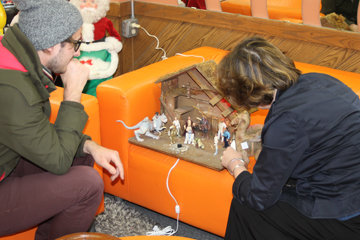
Those words, in brilliant blue, lit up the darkened movie theater and left an indelible mark in my mind’s eye. It was a journey my peers and I would take over and over. Not just in the theaters, but in recreations on school playgrounds, living room floors and sandboxes across the country.
It was spring of 1977. I had been drawn into the universe of “Star Wars,” the imaginative space epic created by George Lucas.
I wasn't alone. “It was an integral part of my childhood,” said T.J. Bucholz, a political consultant based in Lansing. “My parents took me to see all the movies, and I still remember the opening.”
There are now six films, with a seventh opening Friday and two more on the way. The franchise has spawned movies, video games, books and cartoon series. There was even an ill-advised 1978 holiday special, which has gained a cult following despite Lucas’ best attempts to bury it.
There are also hundreds of toys and other merchandise tied to all the moves. Total revenue from the blockbuster series, including merchandising and other income sources, has hit an estimated $28 billion, according to the Statistic Brain Research Institute. When the markets close Dec. 31, the “Star Wars” franchise is ex pected to have generated $1.5 billion in merchandise sales this year alone. In 2012, Lucas, sold the “Star Wars” empire — along with his production company, Lucasfilm — to Disney for $4.05 billion.
The “Star Wars” franchise a gets new boost this week when the latest installment, “The Force Awakens,” opens. So how has the story of Luke Skywalker and company remained in America’s pop culture mainstream for nearly four decades? For many, “Star Wars” has become more than a movie. It’s an obsession.
Joe DiSano, another locally based political consultant, also saw the movie in the theater when he was a child.
“I saw it in the theater and it consumed my imagination,” he said. “It was the only thing I wanted to talk about for years. I would spend hours waiting for the disco version of the ‘Star Wars’ theme to come on the radio.”
Bucholz is a collector of “Star Wars” toys from the late ‘70s and early ‘80s. He’s proud of his original Millennium Falcon — the starship piloted by Han Solo — and he’s working on a collection of the 12 original action figures, still in their packaging. That’s an expensive proposal; those figures can sell for thousands of dollars. In the mid-‘90s, when the original trilogy was re-released with digital upgrades, an adult Bucholz was home sick in bed. He saw on QVC a full-size replica of Han Solo frozen in carbonite, a la “The Empire Strikes Back,” for sale. There were only a few, and they cost $2,000 each. He had his credit card out and the phone in hand when his wife came home. She made it clear that the price would be much greater than $2,000.
“That’ll cost you one wife,” she told him.
Bucholz does consider himself an “excessive” fan.
“I tell people that I am so much of fan, my only son is named Luke,” he said.
Not all “Star Wars” fans take things to that extreme. There are those who just watch the movies, while others dig deeper and read the books. DiSano takes it further, monitoring Internet sites and playing the video games. Others take it to a whole different level, spending hundreds or thousands of dollars building replica uniforms and creating costumes of their favorite characters.
For Mason resident M’jit Raindancer-Stahl, the buzz surrounding the film led her to the theater in 1977 as well.
“It’s a unifying myth cycle for everyone,” she said.
And that’s an observation that was echoed by all the fans interviewed for this story. The enduring themes — good versus evil, confrontation with a father figure, the hero’s journey — capitalize on the mythic constructs that most of humanity seems to share. No less than Joseph Campbell, one of America’s most prominent mythologist, has said so.
“You see, this thing communicates. It is in a language talking to young people today, and that’s marvelous,” Campbell told Bill Moyers during an interview in the six-part PBS series, “The Power of Myth.”
Lucas has acknowledged that Campbell’s book, “The Hero with a Thousand Faces,” informed the original “Star Wars trilogy.” Lucas consciously set about telling a hero’s story, albeit in a sci fi setting, based on that seminal work of myth study.
Woven throughout the film series is a philosophy related to an all powerful energy that binds all living things together: the Force. Obi Wan Kenobi represents the “light” side of that, while Darth Vader represents the “dark” side.
“The force is all of us,” said the Rev. Linda Farmer-Lewis of Central United Methodist Church. “In a Christian sense, it is the God in all of us.”
Farmer-Lewis saw the films while in college. For her, an important theme of “Star Wars” is tolerance.
“All of them are very different beings, but that just doesn’t seem to be a problem,” she said. “It’s very inclusive. That struck me. And that (Yoda), a frog-like person, had the wisdom was perfect.”
Bulcholz and DiSano have been scanning the Internet for years, fishing for any hints about what will happen in the new film. Spoilers have leaked, Bulcholz said, adding that he believes one of the “quintessential moments in cinematic history,” the scene in “The Empire Strikes Back” where Darth Vader reveals he is Luke’s father, could never happen today.
“It would be on social media,” he said. “There is no way to discover something like that again.”
The biggest rumor surrounding the latest film — and one which troubles Bucholz the most — is that Han Solo, the swashbuckling, smart-talking pilot, will die in “The Force Awakens.” Harrison Ford, who originated the character and reprises his role in the new film, has been asking Lucas to kill off the iconic anti-hero for years.
“My son and I have tickets to the preview,” Bulcholz said. “If Han Solo kicks the bucket, I’m walking out.”
Other local fans Anna Rossmann, Todd Letts and Andrew Miller — fans so dedicated they have their own “Star Wars” costumes — said that if Han Solo dies, that is not necessarily a bad thing.
“This is about the next generation,” said Miller. “Here’s the new heroes. So the little kids will be into the new heroes the way we were into the current set.”
Rossmann agreed.
“Those people are in the original trilogy,” she said. “They’ve been through a lot. Time happens. And death is part of time.”
“They’re all old,” Farmer-Lewis said of the actors from the original trilogy. “That’s comforting. It happened to me, so why wouldn’t happen to them?”
Regardless of what happens in the new film, she has a hope “that the cause of good would be picked up.”
“It’s important to always see that we are re-entering these stories to make them our own,” she said. “It’s a great moral tale, not just fiction. They inhabit and inform us as we live by stories. These movies resonate for a reason."
About the cover
When City Pulse decided to create a “Star Wars” nativity scene for the cover, we realized this idea was fraught with theological issues. So we turned to the the Rev. Linda Farmer-Lewis of Central United Methodist Church to help us navigate potential pitfalls.

Farmer-Lewis — a self-proclaimed nativity enthusiast and “Star Wars” fan — met reporter Todd Heywood and City Pulse creative director Jonathan Griffith at the Mega Mall in north Lansing. Rich Kelley, owner of the indoor flea market and antique mall, helped us gather up over 60 “Star Wars” figures to use in the photo.
From there, Farmer-Lewis and Griffith worked together to sort the figures into good and evil characters. Farmer-Lewis selected only good characters for the nativity, noting that in Christian tradition, the nativity is about innocence. But she also selected Darth Vader. You might notice Darth Vader is distant from the action — a deliberate choice. Darth Vader is presented as an evil character, she said, but there is also a promise of redemption.
Farmer-Lewis said she finds many parallels between the “Star Wars” film series and Christian theology. One of the strongest examples is the self-sacrifice of Obi Wan Kenobi, where she sees a direct parallel to the crucifixion.
“Obi Wan realized he will be more powerful in death,” she said. “That is the Christological force. So darkness does not gain more power than lightness.”
Support City Pulse - Donate Today!
Comments
No comments on this item Please log in to comment by clicking here